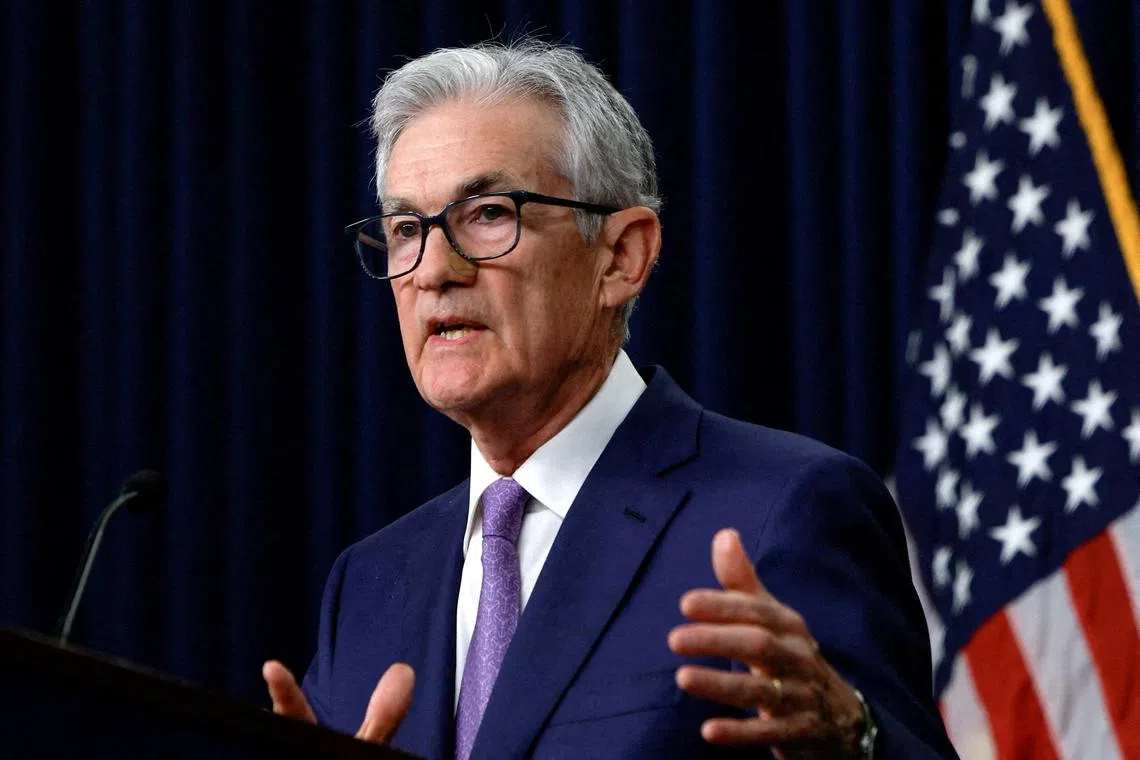US Fed signals September rate cut if inflation stays cool, just 7 weeks shy of Nov 5 elections
Sign up now: Get ST's newsletters delivered to your inbox

Fed chairman Jerome Powell said “the economy is moving closer to the point where it will be appropriate to reduce our policy rate”.
PHOTO: REUTERS
Follow topic:
WASHINGTON – The US Federal Reserve held interest rates steady on July 31, but opened the door to reducing borrowing costs as soon as its next meeting in September as inflation continues coming into line with the US central bank’s 2 per cent target.
“There has been some further progress toward the Committee’s 2 per cent objective,” the US central bank’s Federal Open Market Committee said in a statement at the end of a two-day policy meeting.
During the meeting, it kept its benchmark overnight interest rate in the 5.25 per cent to 5.5 per cent range, but also set the stage for a cut at its Sept 17 to Sept 18 meeting, just seven weeks shy of the Nov 5 US elections.
While Fed officials are wary of any actions that could mar their data-not-politics approach to setting monetary policy, the steady drop in inflation in recent months prompted a broad consensus that the inflation battle was near an end.
Inflation, the Fed said, was now just “somewhat elevated”, a key downgrade from the assessment that it has used throughout much of its battle against rising prices that it was “elevated”.
“We have made no decisions on future meetings” when it comes to rate cuts and all policy decisions will be made on a meeting-by-meeting basis, Fed chairman Jerome Powell said at a press conference after the meeting.
But he added that as Fed officials have been gaining confidence that price pressures are moderating, “the economy is moving closer to the point where it will be appropriate to reduce our policy rate”.
US stocks moved to the day’s high as Mr Powell spoke, while Treasury yields and the dollar dropped.
Traders kept bets that the Fed will start dialling back on its restrictive policy in September, with rate-futures pricing reflecting expectations the first move will be a 25-basis-point cut, followed by two more such reductions at the meetings in November and December.
“This was a baby step on the way to a September rate cut,” said Mr Omair Sharif, president of Inflation Insights. “I expect that further good news on the inflation front in July should set up... (Mr Powell) to deliver a more meaningful signal that a rate cut in September is very likely.”
The US central bank uses the personal consumption expenditures (PCE) price index for its 2 per cent annual inflation target. The PCE price index rose 2.5 per cent in June after exceeding 7 per cent in 2022.
Dual mandate
The Fed’s latest policy statement also removed standing language that it was “highly attentive to inflation risks”, and replaced it with an acknowledgement that policymakers were now “attentive to the risks to both sides of its dual mandate”, which includes a charge from Congress to maintain maximum employment consistent with stable prices.
US central bankers have said it would be appropriate to reduce borrowing costs before inflation actually returns to their target to account for the time it takes monetary policy to affect the economy.
So far, the economy “has continued to expand at a solid pace”, the Fed said in its statement, and while “job gains have moderated”, the unemployment rate “remains low”.
But the jobless rate has been rising, and policymakers have put more focus of late on avoiding the sort of sharp rise in unemployment often associated with high interest rates and slowing inflation.
The Fed did not commit in its statement to a rate cut in September, and repeated that policymakers still need “greater confidence that inflation is moving sustainably towards 2 per cent” before lowering borrowing costs.
But the changes seem consistent with that confidence being reached by September, something investors have been expecting. The Fed raised rates aggressively from March 2022 to July 2023, hiking the benchmark rate by 5.25 percentage points to combat the worst outbreak of inflation in 40 years.
The new policy statement was approved unanimously. REUTERS

